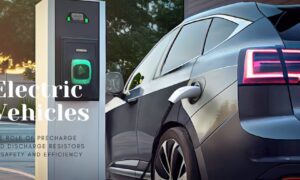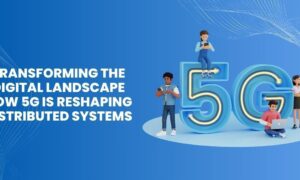The year 2023 has brought with it a multitude of advancements and innovations in the automotive industry. Among these groundbreaking developments, the integration of 5G technology into automotive electronics stands out as a transformative force. As we delve into the potential and possibilities of 5G in shaping the future of automobiles, it becomes clear that this technology is set to redefine the driving experience in ways we could only imagine before.
Introduction
5G: A Revolution in Connectivity
Before we explore the specific ways 5G is impacting automotive electronics, let’s briefly understand what 5G is and why it’s such a game-changer. 5G, short for the fifth generation of wireless communication technology, represents a significant leap forward from its predecessor, 4G. It promises ultra-fast data transfer speeds, low latency, and a massive increase in network capacity.
One of the most remarkable features of 5G is its ability to support a vast number of connected devices simultaneously. This capability forms the foundation for the Internet of Things (IoT), enabling seamless communication between devices, vehicles, and infrastructure. In the context of the automotive industry, 5G is poised to play a pivotal role in shaping the future of vehicle connectivity and automation.
5G-Powered Vehicle-to-Everything (V2X) Communication
One of the most exciting applications of 5G in the automotive sector is Vehicle-to-Everything (V2X) communication. V2X encompasses a wide range of communications, including Vehicle-to-Vehicle (V2V), Vehicle-to-Infrastructure (V2I), Vehicle-to-Pedestrian (V2P), and Vehicle-to-Network (V2N). With 5G, these communication channels are set to become faster, more reliable, and more versatile than ever before.
Imagine a scenario where your car can communicate with nearby vehicles to avoid accidents, receive real-time traffic updates from roadside infrastructure, and even anticipate the movements of pedestrians. This level of connectivity can significantly enhance road safety, reduce congestion, and make commuting more efficient.
5G and Autonomous Vehicles
The advent of autonomous vehicles has been a hot topic in recent years. While self-driving cars are already on the road, their widespread adoption hinges on robust communication networks, and this is where 5G takes the spotlight. Autonomous vehicles rely on a constant stream of data to make split-second decisions, and 5G’s low latency and high bandwidth make it the perfect enabler for such vehicles.
With 5G, autonomous vehicles can communicate with each other, traffic management systems, and even pedestrians’ smartphones in real time. This interconnectedness allows self-driving cars to navigate complex urban environments safely and efficiently. As 5G networks expand and improve, we can expect autonomous vehicles to become an integral part of our daily lives.
Enhanced Infotainment Systems
The driving experience is not just about getting from point A to point B; it’s also about entertainment and connectivity. 5G is set to revolutionize in-car infotainment systems, providing passengers with lightning-fast internet access, streaming services, and immersive multimedia experiences.
Imagine streaming your favorite high-definition movie or participating in a video conference call while your car autonomously takes you to your destination. With 5G, this is not a distant dream but a tangible reality. Additionally, augmented reality (AR) and virtual reality (VR) applications in vehicles will become more prevalent, offering interactive and engaging experiences for passengers.
Over-the-Air Updates
Traditionally, vehicle updates required a trip to the dealership or a mechanic’s garage. However, with 5G, automakers can implement over-the-air (OTA) updates, similar to how smartphones receive software updates. This means that your car can receive performance enhancements, bug fixes, and even new features without the need for physical intervention.
OTA updates not only save time but also reduce maintenance costs and improve the overall user experience. Automakers can continuously fine-tune and upgrade vehicle software to keep up with evolving technology and safety standards.
5G and Smart Traffic Management
Beyond the vehicle itself, 5G is poised to revolutionize the way traffic is managed and controlled. Smart traffic management systems, powered by 5G, can monitor and optimize traffic flow in real time. This includes dynamically adjusting traffic signals, rerouting vehicles to reduce congestion, and even coordinating with autonomous vehicles to improve overall traffic efficiency.
Additionally, 5G-enabled traffic management can enhance road safety by quickly detecting and responding to accidents or hazardous conditions. Emergency services can receive real-time updates and reach accident scenes faster, potentially saving lives.
Environmental Benefits
5G’s role in automotive electronics extends beyond connectivity and convenience. It can also contribute to environmental sustainability. By optimizing traffic flow and reducing congestion, 5G-powered transportation systems can help decrease fuel consumption and emissions. Moreover, the enhanced efficiency of autonomous vehicles can lead to more eco-friendly driving patterns.
Conclusion
The integration of 5G technology into automotive electronics is ushering in a new era of connectivity, safety, and convenience on the road. As we move further into 2023 and beyond, the automotive industry will continue to harness the power of 5G to transform the driving experience. From V2X communication to autonomous vehicles, enhanced infotainment systems, and smart traffic management, 5G is set to shape the future of transportation in ways we can only begin to imagine. As we embrace these innovations, we can look forward to safer, more efficient, and more enjoyable journeys on the road.



































